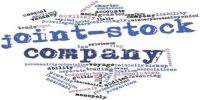Business memos are formal documents most businesses use to communicate. They traditionally have been sent as hard copies, but also can be delivered electronically. Used for more than a hundred years as of 2011, these documents are significant to businesses for six major reasons and have advantages as a communication tool.
John Guillotine of the University of Chicago and Critical Inquiry website explains that as businesses evolved and become more complex at the end of the 1800s, it became increasingly important for companies to communicate effectively and keep records of what they were doing. The need for a concise, efficient communication document became pressing. Business people thus developed memos as a new style of internal business communication. By the 1920s, memos had transformed business interactions and were commonplace. Memos remain a major way of getting ideas across in a business, although technology has changed how business people prepare and deliver them.
- Inexpensive
A major advantage of business memos is that they are inexpensive to create. Even when business people physically print the memo. doing so usually costs the company far less than it would halt work entirely to have a formal meeting about what the memo addresses. If business people send the memo via email, the company also is able to communicate without having ink and paper expenses, and there is no physical disposal of the memo papers necessary for which the company could be charged.
- Evidence
Memo information is harder to dispute than oral communication because the memo is evidence of what the writer said. If there is a dispute, employees and managers can refer to the memo to resolve the conflict. The memo also may serve as a reference for employees for the future as a way of maintaining memory clarity. This keeps operations efficient.
- Timeline Snapshot
Business memos show what was happening in a company at a specific –point. They show who was involved in company actions, what the goals were and who initiated them. By keeping a minimum of a digital copy of each memo produced, the company has records of operations. These are useful for audits and showing investors and other interested parties that the company is progressing toward goals.
- Less Disruptive
Business people are able to produce and deliver memos unobtrusively. Even when the memo is physically printed, employees can read the memo at their leisure. This is less disruptive than other means of communication such as phone calls, instant messaging or meetings.
- Delivery
Delivery of memos is easy. With hard-copy memos, it takes just one person to hand the memo out to employees or put it in the employee mailbox. It usually does not take more than one business day for the memo to travel from department to department. With digital memos, business people can send the memo to hundreds or even thousands of workers with a single click, getting the memo out in just seconds.
- Critical Thinking
Business memos are designed to be short and to the point. Whatever is in the memo is evidence, as well. These two points encourage the writer of the memo to think critically about what he puts into the memo. By doing this, the writer gets a clear picture of the intent behind the writing and thus is better able to.defend the memo’s purpose in the future.















